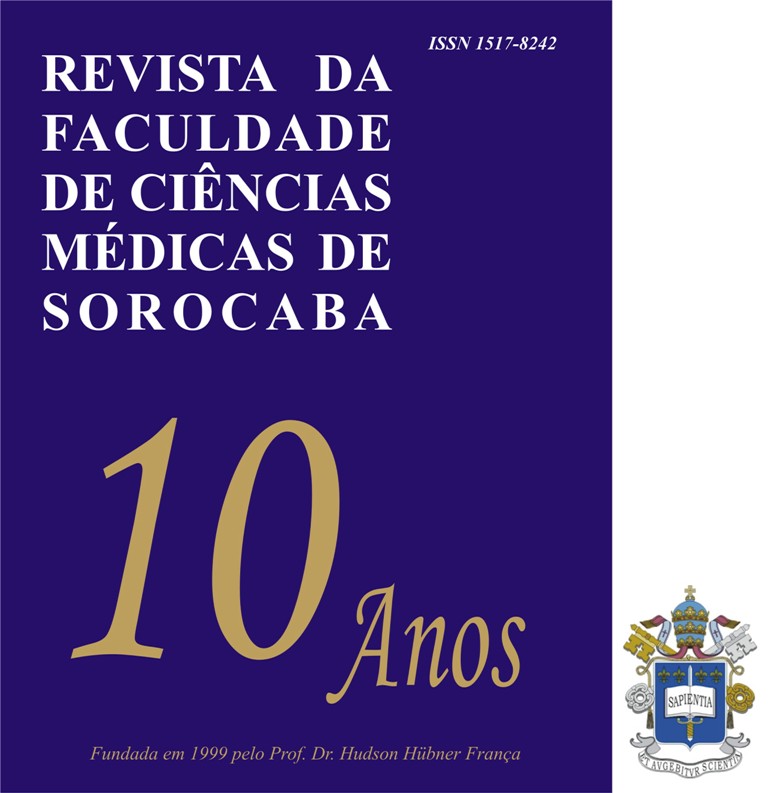Efeitos hemodinâmicos da associação do Propofol à efedrina durante a indução de anestesia geral
Palavras-chave:
Anestesia geral, anestésicos intravenosos, propofol, efedrinaResumo
Introdução: o propofol é um agente hipnótico que durante a indução anestésica pode causar diminuição da pressão arterial. Objetivo: o objetivo do estudo foi avaliar a eficácia da efedrina na prevenção dos efeitos hipotensores arteriais causados pela associação do propofol com o remifentanil como agentes indutores da anestesia. Pacientes e Métodos: trinta pacientes com idades entre 18 e 50 anos, estado físico ASA PI e PII, foram divididos aleatoriamente em três grupos de acordo com a solução empregada durante a indução da anestesia. Grupo I (n = 10), propofol 1%; Grupo II (n = 10), propofol 1% associado à efedrina (0,5 mg.ml-1); Grupo III (n = 10), propofol 1% associado à efedrina (1 mg.ml-1). Os pacientes foram monitorados com pressão arterial não-invasiva, cardioscópio em DII e oxímetro de pulso. Foi administrado midazolam na dose de 0,05mg.kg-1 por via venosa cinco minutos antes da indução. Após pré-oxigenação com oxigênio a 100%, foi administrado remifentanil por via venosa (0,5 mg.kg-1.min-1) por 90 segundos. Em seguida, os pacientes receberam a solução de propofol 1% (associado ou não à efedrina), com velocidade de 180 ml.h-1 até perda do reflexo palpebral seguido de Cisatracúrio (0,15 mg.kg-1). Pressão arterial, freqüência cardíaca e saturação de oxigênio foram registrados antes da indução, 1, 3, 5 e 10 minutos após a administração do propofol. Resultados: os grupos foram homogêneos quanto aos dados antropométricos. A análise de perfil da freqüência cardíaca mostrou não existir diferença entre os grupos estudados. Houve uma diminuição dos valores encontrados em alguns momentos dentro dos grupos I e II, mas sem importância clínica. Com relação à pressão arterial (sistólica e diastólica), houve diminuição dos valores em alguns momentos em relação ao tempo inicial e também entre os grupos, mas não puderam ser classificados como hipotensão arterial. Porém, no grupo I a dose de resgate de efedrina empregada foi maior quando comparada aos demais grupos (p < 0,05). Conclusão: não foi observada, em nenhum dos grupos, diminuição clinicamente importante da pressão arterial e da freqüência cardíaca. Porém, no grupo de pacientes que recebeu o propofol de forma isolada houve maior necessidade de efedrina na forma de resgate quando comparado aos grupos que receberam propofol e efedrina diluídos na mesma solução.Métricas
Downloads
Como Citar
Edição
Seção
Licença
Os autores no momento da submissão transferem os direitos autorais, assim, os manuscritos publicados passam a ser propriedade da revista.
O conteúdo do periódico está licenciado sob uma Licença Creative Commons 4.0, esta licença permite o livre acesso imediato ao trabalho e que qualquer usuário leia, baixe, copie, distribua, imprima, pesquise ou vincule aos textos completos dos artigos, rastreando-os para indexação, passá-los como dados para o software, ou usá-los para qualquer outra finalidade legal.

 Este obra está licenciada com uma Licença
Este obra está licenciada com uma Licença 